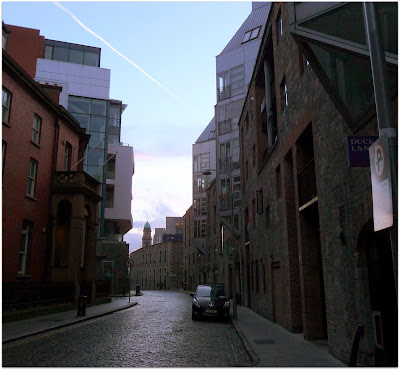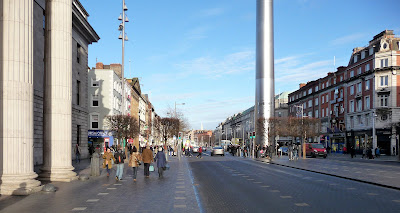
Wednesday, 30 January 2013
Tuesday, 29 January 2013
Monday, 28 January 2013
Sunday, 27 January 2013
Saturday, 26 January 2013
Friday, 25 January 2013
Thursday, 24 January 2013
Wednesday, 23 January 2013
Tuesday, 22 January 2013
Göttingen - Barbara
(...."Of course, we have la Seine
And our Vincennes' wood,
But God, the roses are beautiful
But children are the same,
In Paris or in Goettingen.
May the time of blood and hatred
Never come back
Because there are people I love
In Goettingen, in Goettingen...)
Bien sûr, ce n'est pas la Seine,
Ce n'est pas le bois de Vincennes,
Mais c'est bien joli tout de même,
A Göttingen, à Göttingen,
Pas de quai et pas de rengaines,
Quise se lamentent et qui setrainent,
Mais l'amour y fleurit quand même,
A Göttingen, à Göttingen,
Ils savent mieux que nous, je pense,
L'histoire de nos rois de France,
Hermann, Peter, Helga et Hans,
A Göttingen,
Et que personne ne s'offense,
Mais les contes de notre enfance,
"Il était une fois" commencent,
A Göttingen,
Bien sûr, nous avons la Seine,
Et puis notre bois de Vincennes,
Mais, Dieu, que les roses sont belles,
A Göttingen, à Göttingen,
Nous, nous avons nos matins blemes,
Et l'ame grise de Verlaine,
Eux, c'est la mélancolie même,
A Göttingen, à Göttingen,
Quand ils ne savent rien nous dire,
Ils restent là à, nous sourire,
Mais nous les comprenons quand même,
Les enfants blonds de Göttingen,
Et tant pis pour ceux qui s'étonnent,
Et que les autres me pardonnent,
Mais les enfants se sont les mêmes,
A Paris ou à Göttingen,
Ô faites que jamais ne revienne,
Le temps du sang et de la haine,
Car il y a des gens que j'aime,
A Göttingen, à Göttingen,
Et lorsque sonnerait l'alarme,
S'il fallait reprendre les armes,
Mon coeur verserait une larme,
Pour Göttingen, Pour Göttingen...
Sunday, 20 January 2013
Saturday, 19 January 2013
(the other) St Michan's

One of Dublin's more unusual attractions has to be St. Michan's Church. Named after a Danish Bishop, it was for five hundred years the only parish church in Dublin north of the River Liffey. Founded around 1095 by the Danish colony in Oxmanstown and located near the Four Courts, the present building dates from about 1685 when it was rebuilt to serve a more prosperous congregation in an area created by Sir Humphrey Jervis. Historians believe the church may have been designed by Sir William Robinson, Ireland's Surveyor General (1645 - 1712).
From its founding until the mid sixteenth century, monks from Christ Church Cathedral served the church. Then in 1547 it became a part of Christ Church Cathedral with the Precenter of the Cathedral in charge of the parish. This remained so until 1870 when the Church of Ireland was disestablished and disendowed, meaning it was no longer connected with the state and became a self-governing body. At this time the parish was separated from the Cathedral but in later years it again became a part of the Christ Church group of parishes.
In addition to the rebuilding in 1685, the church underwent extensive repair in 1828. During the shelling of the Four Courts in 1922, the roof suffered damage and the east window was shattered and repaired with plain glass. In 1958 the present window was added, moved from St. Matthias' Church on Adelaide Road.
The St. Michan's organ is one of the oldest in the country still in use. It is believed that George F. Handel played it when composing The Messiah. A panel on the organ gallery, carved from a single block of wood, portrays a series of musical instruments in high relief. A Penitent's Stool, an eighteenth-century pulpit and font, and a chalice dating from 1516 are among the items of note.
The main attraction, however, lies in the vaults underneath the church proper, its access reached by a narrow stone stairway. On either side of a tunnel lined with limestone and mortar extend long narrow galleries for the placing of coffins. Some are private and fastened with wooden or iron doors, while others are open. Through the iron bars in some, the coffins can be seen lying in a helter skelter fashion, some apparently bursting at the seams with an arm or leg sticking up. In one of these open chambers lie the grisly contents sought by numerous visitors: the Big Four. Here the casket lids are off, exposing bodies partly covered with taut, leathery skin, covered in a thick layer of dust. Three of the coffins lie in a row across the front, a woman on the right, a man with a hand and both feet cut off in the center--some say because he was a thief, others say so the body could fit into the coffin. On the left is a nun. The coffin along the rear wall is that of the Crusader, the mummy believed to have been a soldier returned from the Crusades. His body has been cut in half, in order for it to fit the coffin. One of his hands is lifted slightly in the air.
The last room holds the coffins of the Sheare brothers who were executed by the British following the Rising of 1798. When their old coffins were replaced with new ones at the bicentennial commemoration in 1998, it was discovered that the standard British punishment for traitors had been enacted: the bodies had been hanged, drawn and quartered.
In the church graveyard are other notables, including Oliver Bond, who took part in the 1798 Rising and mathematician William Rowan Hamilton. It is generally thought that the remains of Robert Emmet, executed during the 1803 Rising, are also interred at St. Michan's.
Why is it that decomposition of these bodies has been retarded more than elsewhere in Dublin? It was thought the high concentration of lime might be the answer, but it is no more so here than in other vaults around the city. Possibly it occurs because St. Michan's Church lies lower and nearer the bed of the Liffey. There occurs a similar condition at Knockmoy Abbey in County Galway, also on the Aran Islands. Twelfth-century historian Geraldus Cambrensis noted more than six hundred years ago: "There is in the west of Connacht, an island place in the sea, called Aren, to which St. Brendan had often recourse. The dead bodies need not be graveled, for the ayre is so pure that the contagion of any carrion may not infect it."
The very dry atmosphere may be yet another reason the mummies have remained in a state of semi-preservation. Fascinating though it is, the Mummies of St. Michan's is not a tour for the faint-hearted.
Friday, 18 January 2013
St Michan's Catholic Church, Halston Street

St Michan's Catholic Church was founded as a parochial chapel in the 1700’s. The features of the church remain relatively unchanged since construction with the exception of the work completed on the Sanctuary following Vatican II. There are side altars to the Sacred Heart and to the Blessed Virgin.
The stained glass windows are fine examples of the art of stained glass depicting the Mysteries of the Rosary and the Seven Sacraments.
Thursday, 17 January 2013
Monday, 14 January 2013
Sunday, 13 January 2013
Saturday, 12 January 2013
Friday, 11 January 2013
Thursday, 10 January 2013
Wednesday, 9 January 2013
Subscribe to:
Posts (Atom)






















